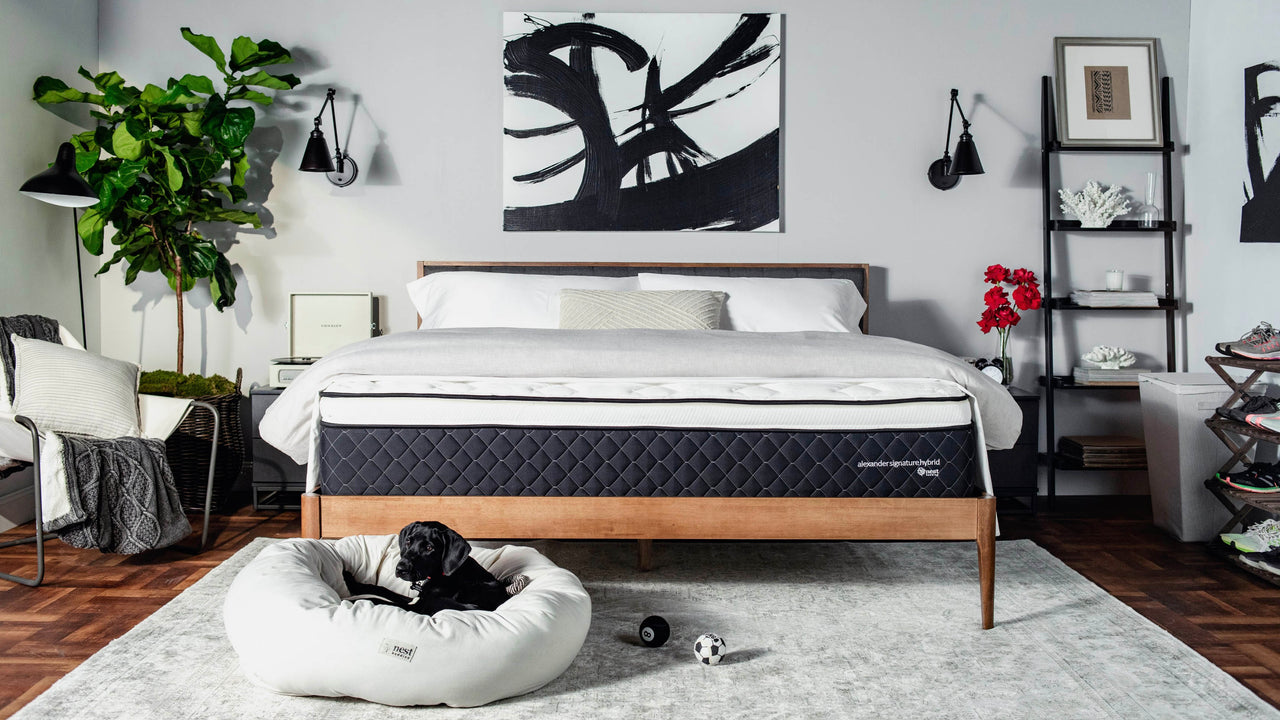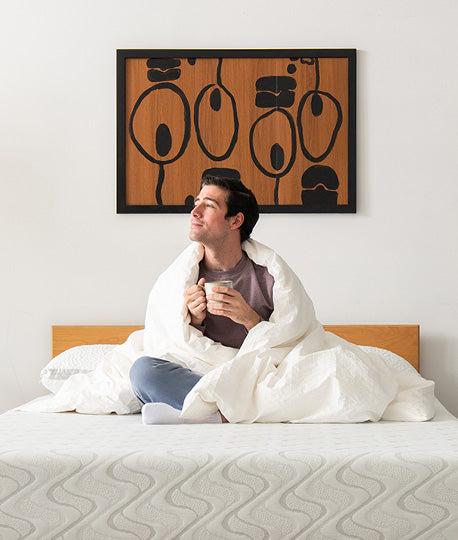Bed Size Comparison Guide: Finding Your Perfect Match

Selecting the right bed size ranks among the most important decisions for creating your ideal sleep environment. The dimensions of your mattress affect not just your comfort and sleep quality, but also your bedroom's functionality and aesthetic appeal. Whether you're moving into a new home, upgrading your current setup, or simply wanting more space to stretch out, understanding bed sizes helps you make an informed choice.
This comprehensive guide breaks down everything you need to know about standard bed dimensions, room considerations, and how to select the perfect size for your specific needs.
Standard Bed Sizes: A Complete Overview
Twin Size Beds
Twin beds measure 38 inches wide by 75 inches long, making them an excellent choice for children's rooms or small spaces. These beds work well for single sleepers under 6 feet tall and fit comfortably in rooms as small as 7 feet by 10 feet. The compact size makes Twin beds particularly suitable for kids transitioning from cribs to their first "big kid" bed.
Here at Nest Bedding, our Twin beds come with the same high-quality materials and construction as their larger counterparts, offering excellent support for growing children. The modest dimensions also make Twin beds ideal for guest rooms or dormitories, where space optimization is key.
Twin XL Size Beds
At 38 inches wide by 80 inches long, Twin XL beds provide an additional 5 inches in length compared to standard Twin sizes. This extra length accommodates taller individuals, making Twin XL beds popular in college dormitories and studio apartments. The added length ensures comfort for adults over 6 feet tall while maintaining the same narrow width as a Twin bed.
Full Size Beds
Full-size beds, also known as Double beds, measure 54 inches wide by 75 inches long. This size offers significantly more width than Twin options, making it suitable for single adults who want extra space to move around. While Full beds can accommodate two sleepers, they provide each person with only 27 inches of personal space - less than a Twin bed would offer to a single sleeper.
Our full-size mattresses provide an excellent middle ground between Twin and Queen sizes, perfect for teenagers or single adults with smaller bedrooms. The full-size fits well in rooms measuring at least 10 feet by 12 feet.
Queen Size Beds
Queen-size beds, measuring 60 inches wide by 80 inches long, represent the most popular mattress size in the United States. This size offers couples 30 inches of personal space each - a comfortable amount for most sleepers. Queen beds fit well in rooms measuring at least 10 feet by 10 feet, providing enough space for additional furniture while maintaining good flow.
Our Queen mattresses come in various models to suit different sleep preferences, from plush to firm options. The size proves particularly popular among couples living in apartments or homes with moderately sized bedrooms.
King Size Beds
Standard King beds measure 76 inches wide by 80 inches long, providing maximum width for couples who prefer extra personal space. This size gives each person 38 inches of width, equivalent to a Twin bed. King-size beds require larger rooms, ideally measuring at least 12 feet by 12 feet, to accommodate their substantial dimensions.
California King Size Beds
California King beds measure 72 inches wide by 84 inches long, offering extra length for very tall individuals. While slightly narrower than standard King beds, the additional length makes California Kings ideal for sleepers over 6 feet 2 inches tall. These beds work best in rectangular rooms with dimensions of at least 12 feet by 12 feet.
Room Size Considerations
Measuring Your Space
Before selecting a bed size, measure your bedroom carefully. Include these key measurements:
-
Room length and width
-
Door width and swing path
-
Window locations
-
Heating and cooling vent positions
-
Electrical outlet locations
Leave at least 2 feet of space on three sides of the bed for comfortable movement. Consider the space needed for other furniture like dressers, nightstands, and chairs.
Traffic Flow
Proper traffic flow through the bedroom remains essential for comfort and functionality. When planning bed placement, consider:
-
Natural pathways through the room
-
Access to closets and en-suite bathrooms
-
Space needed for getting dressed
-
Room for making the bed
Additional Furniture Placement
Different bed sizes impact your ability to include other furniture pieces. Consider these typical bedroom furniture dimensions:
-
Nightstands: 20-24 inches wide
-
Dressers: 60-72 inches wide
-
Chairs: 30-36 inches wide
-
TV stands: 48-72 inches wide
Choosing the Right Size for Your Needs
Single Sleepers
Single adults have several options depending on their preferences and room size:
-
Twin XL: Ideal for tall individuals in small spaces
-
Full: Perfect for those wanting extra width without overwhelming smaller rooms
-
Queen: Excellent for single sleepers who enjoy spreading out
Couples
Couples should consider these factors when selecting a bed size:
-
Personal space preferences
-
Sleep styles (active vs. still sleepers)
-
Room dimensions
-
Budget considerations
Our Queen-size beds offer excellent value for couples, while King sizes provide maximum personal space.
Families with Children
Families with young children who occasionally co-sleep might prefer:
-
King-size beds for maximum space
-
California King for tall parents needing extra length
-
Queen size as a minimum for occasional family cuddle time
Pet Owners
Pet owners should factor in space for their furry friends:
-
Medium to large dogs might need king-size beds
-
Cats typically require less space, but consider their preferred sleeping positions
-
Multiple pets may necessitate larger bed sizes
Special Considerations
Room Architecture
Consider these architectural elements when choosing bed size:
-
Sloped ceilings
-
Built-in storage
-
Window placement
-
Door swing paths
Storage Needs
Some bed sizes offer additional storage opportunities:
-
Platform beds with built-in drawers
-
Space for under-bed storage containers
-
Room for bedside tables and other storage furniture
Budget Factors
Remember that larger beds typically mean higher costs for:
-
Mattresses
-
Bed frames
-
Bedding sets
-
Delivery and setup
Making the Final Decision
Comfort vs. Space
Balance personal comfort preferences with available space:
-
Don't sacrifice walking space for a larger bed
-
Consider future needs and potential moves
-
Think about long-term comfort and satisfaction
Quality Considerations
Invest in quality regardless of size:
-
Choose reputable reputable brands like Nest Bedding
-
Look for warranties and return policies
-
Consider materials and construction quality
Conclusion
Selecting the right bed size involves carefully weighing multiple factors, from room dimensions to personal sleep preferences. Take time to measure your space accurately and consider your current and future needs. Remember that quality matters as much as size; investing in a well-made mattress from a trusted company like Nest Bedding ensures comfort and durability regardless of dimensions.
For the next steps in your bed-buying journey:
-
Measure your bedroom carefully
-
Consider your sleeping arrangements and preferences
-
Explore our collection for different mattress options
-
Review return policies and warranties
-
Make your selection based on both practical considerations and comfort preferences




